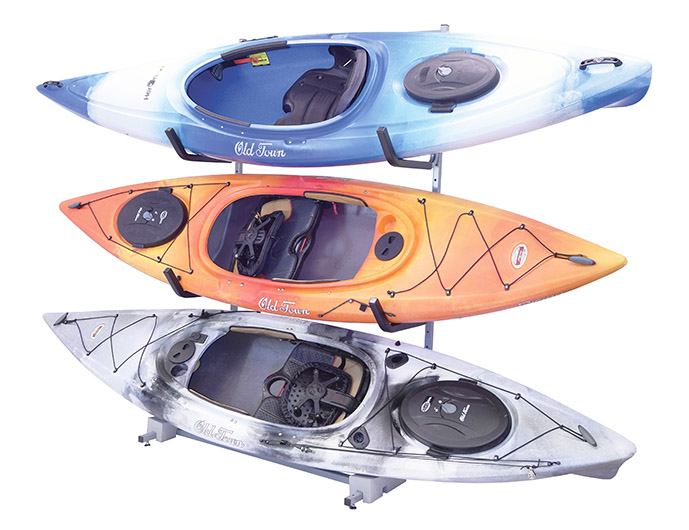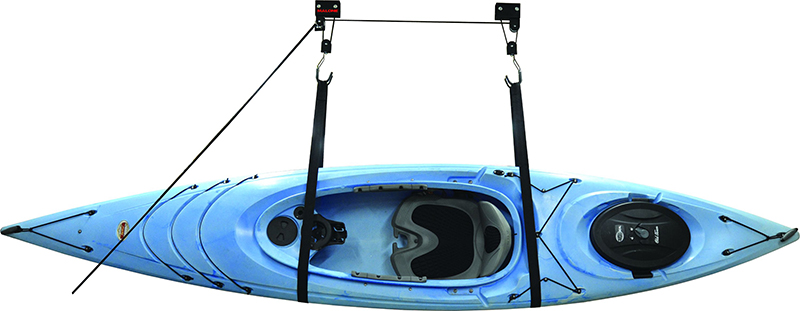Ultimate Kayak Storage Guide: How to Store a Kayak Year-Round
Proper kayak storage is essential to protect your investment and ensure your watercraft is ready for adventure whenever you are. Whether you're preparing for winter, dealing with limited space, or exploring DIY options, this guide covers the best ways to store a kayak indoors and outdoors.
Why Kayak Storage Matters
Kayaks are built to withstand the elements, but prolonged exposure to sun, moisture, and freezing temperatures can degrade materials over time. Learning how to store a kayak properly helps prevent warping, fading, and mildew - extending the life of your kayak and keeping it safe between paddling seasons.
Indoor vs Outdoor Kayak Storage
When deciding between indoor vs outdoor kayak storage, consider your available space, climate, and frequency of use.
Indoor Storage
Indoor kayak storage is ideal for protecting your kayak from UV rays, moisture, and pests. Garages, basements, sheds, or even spare rooms can work well. If you're short on space, look into kayak storage for small spaces, such as:
- Wall-mounted racks
- Ceiling hoists
- Freestanding stands
- Vertical storage systems
These solutions keep your kayak secure and out of the way while maintaining easy access.

Outdoor Storage
If indoor space is limited, outdoor kayak storage can be a viable option with the right precautions. Use a weather-resistant cover and elevate the kayak off the ground to prevent moisture buildup. Store it under a deck, on a covered porch, or in a shaded area to minimize sun exposure.
Winter Kayak Storage Tips
When temperatures drop, it's time to think about winter kayak storage. The best way to store a kayak in winter is indoors, away from freezing temperatures and snow. If indoor storage isn't possible:
- Use a breathable, waterproof cover.
- Store the kayak upside down or on its side.
- Avoid placing it directly on the ground.
- Check periodically for moisture or pests.
Proper kayak winter storage ensures your boat stays in top condition for spring paddling.
DIY Kayak Rack Ideas
Looking for a budget-friendly solution? A DIY kayak rack can be customized to fit your space and style. Popular materials include PVC pipe, wood, and metal. Whether you need a wall-mounted rack for your garage or a freestanding rack for your backyard, DIY options offer flexibility and savings.
Here are a few ideas:
- PVC kayak rack: Lightweight and easy to assemble.
- Wooden kayak stand: Durable and customizable.
- Ceiling hoist system: Great for garages with vertical space.

General Kayak Storage Tips
- No matter where or how you store your kayak, keep these tips in mind:
- Clean and dry your kayak before storing.
- Avoid direct sunlight and extreme temperatures.
- Don't hang it by the handles - they're not designed to support the full weight.
- Use padded supports to prevent pressure points.
- Store it in a way that maintains its shape.
Final Thoughts
Whether you're storing your kayak for the winter or just between weekend paddles, choosing the right method matters. From DIY kayak racks to indoor vs outdoor kayak storage solutions, there's a setup for every paddler and space. With these tips, you'll keep your kayak safe, secure, and ready for your next adventure.
Frequently Asked Questions (FAQ)
Can I store my kayak outside year-round?
Yes, you can store your kayak outside year-round, but it requires extra care to prevent damage. Use a weather-resistant kayak cover, elevate the kayak off the ground, and place it in a shaded or sheltered area to minimize exposure to sun, rain, and snow. For colder climates, consider winter kayak storage solutions that protect against freezing temperatures and moisture buildup.
What's the best way to store a kayak in a garage?
The best way to store a kayak in a garage depends on your available space. Popular options include:
- Wall-mounted kayak racks to keep the kayak off the floor.
- Ceiling hoist systems for vertical storage.
- Freestanding kayak stands for easy access.
These methods are ideal for indoor kayak storage and help protect your kayak from damage while maximizing garage space. If you're working with limited room, explore kayak storage for small spaces using compact or vertical solutions.
Looking for canoe storage tips? Check out our Ultimate Canoe Storage Guide.






